The SfRBM Foundation was designed to foster and support SfRBM’s education, training, and research programs as well as fund new developments and opportunities in these areas.
In fact, since 1995, SfRBM has provided over $450,000 in Research Mini-Fellowships, Travel, and Young Investigator Awards to support scientists in early stages of their careers.
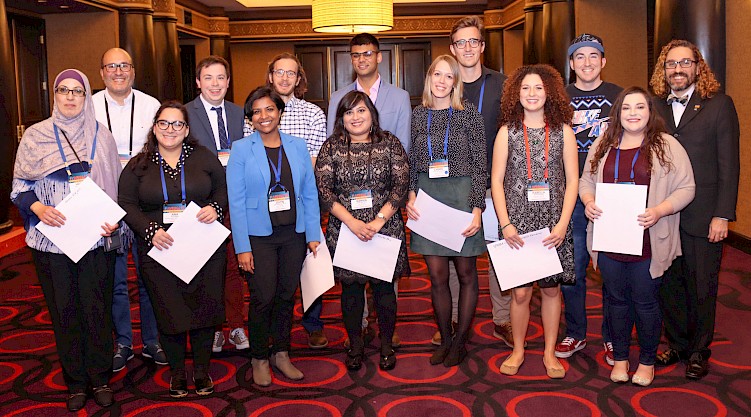
There are a number of ways to contribute, including one-time donations and Planned Giving. As 2019 comes to a close, please consider including the SfRBM Foundation in your giving plans.
Here are 5 reasons to donate to the SfRBM Foundation Today:
Please call us today at (317) 205-9482 to learn more about Planned Giving Opportunities. 
— Published
Categories: Free Radical Biology and Medicine, Education, SfRBM Trainee Council, Research, Redox Biology
By: Phyllis A. Dennery, MD
How do physicians differ from basic scientists in their approach to diseases? The former provide insights into disease processes and their manifestations whereas, the latter delve deeply into mechanisms and look for potential therapeutic approaches. If we capitalize on these differences, this could lead to an ideal partnership between those who witness disease at the bedside and those who can adeptly use ever-evolving tools to elucidate the mechanistic underpinnings of human pathology.
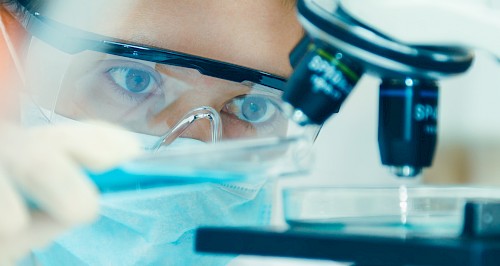 Why is this partnership not always successful? Communication is often challenging due to limited understanding of each participants perspective. In fact, the gap is widening between the language spoken by biomedical scientists and clinicians/physician-scientists. With exponential advances in molecular biology and genetics, it has become difficult to incorporate these novel understandings into everyday medical practice. Philosophically, the two groups have different goals. Science for the sake of science is laudable and necessary to organically discover new insights. However, the pressures of finding a solution for diseases exist and are much more vivid for the physician-scientists who want solutions for their patients. Clinicians want to save lives and have immediate impact but are hampered by the fear of injury and/or bad outcomes. Scientists are encouraged to challenge paradigms and to develop new approaches which leads to a new found knowledge without the fear of such consequences. There needs to be a way to bridge the divide between the culture of basic scientists and that of physician-scientists.
Why is this partnership not always successful? Communication is often challenging due to limited understanding of each participants perspective. In fact, the gap is widening between the language spoken by biomedical scientists and clinicians/physician-scientists. With exponential advances in molecular biology and genetics, it has become difficult to incorporate these novel understandings into everyday medical practice. Philosophically, the two groups have different goals. Science for the sake of science is laudable and necessary to organically discover new insights. However, the pressures of finding a solution for diseases exist and are much more vivid for the physician-scientists who want solutions for their patients. Clinicians want to save lives and have immediate impact but are hampered by the fear of injury and/or bad outcomes. Scientists are encouraged to challenge paradigms and to develop new approaches which leads to a new found knowledge without the fear of such consequences. There needs to be a way to bridge the divide between the culture of basic scientists and that of physician-scientists.
Of course, the integration of newfound knowledge of basic science insights into clinical decision making is important to improve patient care. However, once a discovery is made, dissemination and adoption in clinical practice is another significant hurdle which requires community engagement and public health support. This path is riddled with pitfalls. Therefore, it is often difficult to see how certain basic concepts lead to therapeutic interventions and to clinical successes. This has been a big challenge for redox biology in that despite years of clear ascertainment that antioxidants are beneficial to prevent cytotoxicity in various model systems, the applications to large scale human trials have been extremely limited and discouraging. This is likely due to the fact that the human organism is much more complex than any other laboratory-based model and there are many more factors that come into play to alter outcomes, in particular, disparities in healthcare delivery and lack of cultural competence. Nevertheless, a partnership between physicians and scientists may overcome these hurdles by identifying ways to enhance a particular benefit without causing harm.
Recently, we have seen some encouraging success stories around treatment of disease using redox biology concepts. Hopefully, this is the beginning of a new era. The process from discovery to implementations is long and tortuous. A recent publication reviewed the literature and identified papers where a scientific discovery was made followed by its adaptation into healthcare. On the average, it took 17 years for this to happen (1). This means that we have to tolerate the uncertainty between basic discoveries and eventual adaptation into clinical practice for many years and not lose faith. This is not for the faint of heart and requires constant vigilance to continue to focus on the ultimate goal through partnership and collaboration.
Many will argue that we have to conduct science for the sake of science, rather than focus on finding an immediate solution to a disease process. I would say that we have to adopt both approaches. Families, patients, their families and communities rely on us to help improve their health. Without a goal towards therapeutic discoveries, we will extinguish their hopes and erode their faith in us.
How can we then work together as physician-scientists and basic scientists? We can be patient with each other in terms of understanding each other’s language. Oftentimes the physician rolls her eyes when PhD colleagues try to describe a disease process, smugly dismissing the limited understanding. In return, the basic scientist is exasperated by the approaches taken by the physician-scientist to solve a problem, and chastise him for his lack of rigor or his choice of vague assays. Working together and encouraging each other will go farther. Trying to formalize relationships between the most basic and most clinical investigators would make for an synergistic opportunity to accelerate discovery and implementation.
In the past 28 years, it has been my distinct pleasure to be engaged with SfRBM, known previously as the Society for Free Radical Biology and Medicine and The Oxygen Society. I have enjoyed every iteration of this Society and have felt compelled to be an active participant despite feeling inadequate in my lack of formal training in chemistry, biochemistry, molecular biology and genetics. I feel, nonetheless, that we physician-scientists can bring value to the Society in many ways.
As I approach the Presidency of the SfRBM as its first MD leader, I will look forward to working with you and learning from you to speak a common language that enhances scientific discovery and ultimately promotes health.
1. Morris ZS, Wooding S, Grant J. The answer is 17 years, what is the question: understanding time lags in translational research. J R Soc Med. 2011;104(12):510-20.
— Published
Categories: Free Radical Biology and Medicine, Redox Biology
By Dr. Marcus S. Cooke, Ph.D., FRCPath of Florida International University
Luke Skywalker: “I won't fail you! I'm not afraid.”
Yoda: “Oh! You will be. You will be.”
Similar to Luke’s training by Yoda, the PhD is like an apprenticeship, students are mentored and supported throughout, but this is gradually withdrawn, as they become more accomplished, culminating with being an expert in the field, and an independent researcher. On this basis, selection of the right supervisor for you is as vital as selecting the right project area. The successful pursuit of a doctoral degree is a two-way street that requires good alignment between your objectives and those of your supervisor, as well as your progressive capacity to deal with failure and rejection (it’s a fact of life for researchers, I’m afraid). 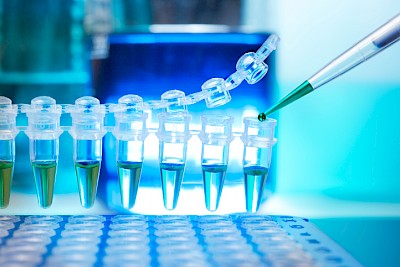
A PhD requires fulltime dedication to the project. Before considering undertaking a PhD a prospective student must be willing to devote themselves to the project, understanding that experiments sometimes require working outside business hours. You may possess a great deal of practical experience, but this experience by itself is not sufficient to earn the degree. The project fails or succeeds based on the effort, and ideas from the student, guided and supported by the supervisor. In order to have the required level of commitment, the chosen project on which you work must really excite you – this will provide the motivation to keep going, particularly when experiments prove challenging (i.e. techniques stop working for no apparent no reason!). There will be lows, but there will also be highs, for example when your abstract gets accepted for an international meeting, or your first manuscript gets accepted (it feels good whether it’s your first or 81st). This strengthening of your character will surely enrich your career and life.
The kinds of wet lab projects offered in the broad area of Biomedical Sciences do not readily lend themselves to a part-time degree, but that is not to say it is not possible. A PhD in the Biomedical Sciences means 3-4+ years of intensive research in the lab – sounds like plenty of time, right? But the time flies by in which you must have generated a significant amount of novel data, addressing an important research question. Also, don’t think that a PhD is simply an extension of a Master’s degree, only longer. It is completely different, with objectives, timelines and expectations of progress toward scientific independence that are not seen at the Master’s level. 
Good organization of personal time will be needed, such that you can improve skills that are just as important as your experimental work. This includes: keeping up with the literature about the subject, improving scientific writing, cultivating attention to detail, attending seminars and workshops in and outside your institution, and very importantly, mastering your own oral communication skills. Most institutions demand a minimum of two original data manuscripts, and a review article to submit towards your PhD. These will need to survive the scrutiny of peer review, which will train your capacity to receive criticism and to work proactively on improving the quality of your research.
A huge amount of self-motivation is required to withstand the intrinsic challenges of developing a scientific project toward thinking independently. The structured, taught element of the PhD is minor, in comparison to the time spent in the lab, and just provides a general grounding to get improve your knowledge base. The real learning and training comes in the lab where research skills are learnt firsthand, and tested on a regular basis through the experiments required to test your hypothesis.
Still wanting to do a PhD in the Biomedical Sciences? Get in touch with prospective mentors, discuss with them theirs and your research and career expectations, and go for it! If you are intrinsically thrilled to investigate Nature, you will not be hampered by the high level of commitment required in this career path. With the right PhD training (irrespective of the discipline), you will be well prepared for a wide variety of career options, though giving you skills which allow you to think, speak, write, and problem-solve in a particular way that makes you an asset to any organization.
— Published
Categories: Research, Free Radical Biology and Medicine, SfRBM Trainee Council, Redox Biology
By Luciana Hannibal, Ph.D.
Team success goes hand in hand with the professional development of its members. New employees are selected according to background education (know-how theory), previous accomplishments (know-how experience) and potential (know-how to grow). These important metrics help to recruit candidates who are best suited for the position, and capture them at a stage of high self-motivation and drive. Only a few however, will stand out for their achievements, even when the same selection process has been applied to all. Why? A pool of employees will choose to remain in a professional comfort-zone, meeting personal and team demands satisfactorily. Others will strive to further their professional development and to make a difference in the team. Some will go beyond and prepare themselves to lead their own teams in the future. Even after careful recruitment, a population of talented individuals may however derail from successful career development. A mismatch of talents and projects can hamper advancement regardless of individual mindset. Researchers in leading positions are expected to excel at understanding the scientific problem, providing new ideas and solutions, teaching and supervising, cooperating effectively with internal and external colleagues and recruiting copious amounts of extramural funding. Optimizing self-reliance of the team is thus crucial for individual and collective return on investment, and this involves aligning talents with projects. Team leaders must identify individual strengths to effectively assign project roles, and employees must be visible for their most valuable talents. Self-motivated employees, as they typically land in the new job, constitute an invaluable asset.
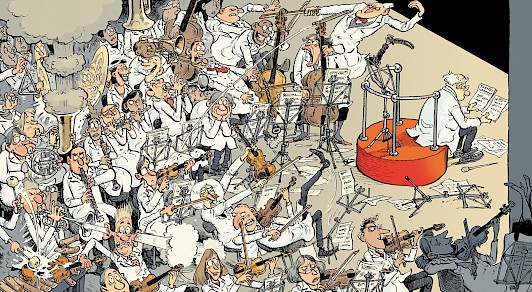
Here is a brief guide on how to blend projects with selected talent types:
— Published
Categories: Education, Redox Biology, Free Radical Biology and Medicine
Approximately 2.9 million people in the United States suffer from epilepsy, according to the CDC. For patients living with this diagnosis and their doctors it is often difficult to predict the onset or progression of chronic seizures. Thanks to a newly published study from the University of Colorado Skaggs School of Pharmacy and Pharmaceutical Sciences at the Anschutz Medical Campus, that may be changing.
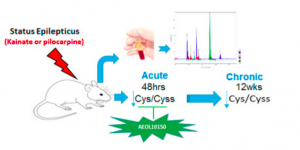 The study, led by Drs. Manisha Patel and Li-Ping Liang of the University of Colorado, was recently published in Redox Biology, a journal of the Society for Redox Biology and Medicine (SFRBM).
The study, led by Drs. Manisha Patel and Li-Ping Liang of the University of Colorado, was recently published in Redox Biology, a journal of the Society for Redox Biology and Medicine (SFRBM).
The study was designed to determine if the ratio of reduced and oxidized forms of an amino acid, cysteine and cystine respectively, could serve as an accurate biomarker to predict the onset or progression of seizures associated with epilepsy. Using a rat model, it was determined that decreased cysteine/cystine ratio in plasma may serve as a redox biomarker in epilepsy.
Specifically, seizures were chemically-induced in rats, which were then monitored closely for behavioral changes. Plasma was then taken from the rats 48 hours and 12 weeks after treatment to mimic acute and chronic epileptic conditions. It was found that cysteine/cystine ratio was an accurate redox biomarker for epilepsy. Plasma cysteine/cystine was reduced over 60% in rats with acute epileptic responses and over 37% in rats with chronic epilepsy. Interestingly, cysteine/cystine ratio was unaltered in rats also treated with an antioxidant known to prevent epileptic brain injury.
“Currently the field of epilepsy lacks peripheral blood-based biomarkers that could predict the onset or progression of chronic seizures following an epileptogenic injury,” said Dr. Manisha Patel a Professor at the University of Colorado School of Pharmacy and SFRBM Member. “We are confident that this study is a significant step toward changing this, and will one day help those living with temporal lobe epilepsy.”
About Dr. Patel’s lab
The overarching theme of research in Dr. Patel’s laboratory is to understand the role of redox and metabolic mechanisms in epilepsy. Her laboratory has provided compelling evidence for the role of reactive species and mitochondrial dysfunction in animal models of epilepsy. Furthermore, her research has identified reactive species as novel targets for co-morbidities of epilepsy.
About the University of Colorado Skaggs School of Pharmacy and Pharmaceutical Sciences
Since its inception in 1911, the University of Colorado Skaggs School of Pharmacy and Pharmaceutical Sciences has experienced numerous milestones and is ranked in the top 20 percent of all schools of pharmacy in the country, and fourth in the nation for total NIH funding. Committed to pharmaceutical education, research and patient care, the School educates students in the properties of medicinal agents, the biology of disease, the actions of drugs, and best practices for clinical and therapeutic uses of drugs. Located at the Anschutz Medical Campus, the University of Colorado is the only completely new education, research and patient care facility in the nation today.
— Published
Categories: Free Radical Biology and Medicine, Redox Biology, Research